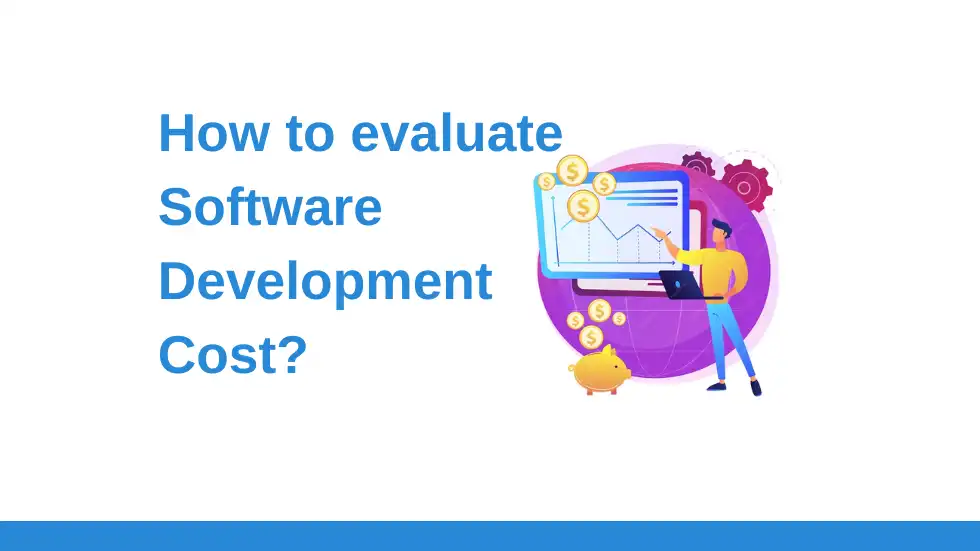Estimating software development costs is an important part of any software development project. It allows businesses to budget for the project and make sure that it is financially viable. Several factors affect software development costs, so it can be difficult to provide an accurate estimate without having a good understanding of the project requirements. However, several techniques can be used to estimate software development costs with a reasonable degree of accuracy.
Before estimating software development cost, it’s important to break the entire product into four parts – Minimum Viable Product (MVP), Core Product, Enhancement and Support. Each of these parts plays an important role in the complete SDLC.
Product is one such thing that constantly evolves right from the stage of whiteboarding. Clarity of vision does exist; however, as products evolve, scope and features do keep on changing constantly. I have rarely seen scope reducing; such could be possible at MVP, but eventually, as the product enters enhancement and value proposition, the work scope automatically increases. Limited development part can be done on a fixed project basis; however, such needs to be detailed and documented with clear alignment of the end product goal and end customer vision.
Factors that affect software development cost
The following are some of the key factors that affect software development costs:
- Scope of the project: The scope of the project refers to the features and functionality that the software will have. Such scope should always be divided into four parts.
- Minimum Viable Product (MVP) – Typically timeline for this should not be more than seven weeks, with minimum features covering one or two user journeys, conveying product flavour and generating stickiness to the product. This stage should mandatorily consist of the Product Designer to understand the customer engagement psychology and potential user journey.
- Core Product – The core part of any product should always be released and planned as per the complexities associated with deliveries. Usually, smaller releases are advisable to ensure product stability and quick bug fixes with modern or advanced user experience.
- Enhancement – These are usually considered once the product has achieved stability and customers are demanding the adoption of advanced features. Many times, AI and ML models for prediction can be part of this stage.
- Support & Maintenance – Post-delivery ongoing.
- Technology stack: Technology should always be the last factor to consider. However, while deciding tech stack, it’s important to consider the tech landscape that will revolve around the tech space for at least the next ten years. Client-server architecture has multiple options these days due to multiple JavaScript options and the evolution of wide communities like Angular, React, Nodejs, etc.
- Ability to resonate with the product vision: 99% of product development fails because the development team is never able to relate to the client’s product vision. It’s important to ensure the team working on the product development does research at the competition level, and that’s where the team can resonate with the product vision.
Software development cost estimation techniques
There are several software development cost estimation techniques that can be used to estimate the cost of a software development project. Some of the most common techniques include:
- Parametric cost estimation: Parametric cost estimation is a technique that uses historical data to estimate the cost of a new project. This technique is typically used for projects which is more like migration and enhancement based on the legacy stacks.
- Analogous cost estimation: Analogous cost estimation is a technique that uses the cost of similar projects to estimate the cost of a new project. This technique is typically used for projects that are unique and have yet to be comparable.
- Bottom-up cost estimation: Bottom-up cost estimation is a technique that estimates the cost of a project by breaking it down into smaller tasks and estimating the cost of each task individually. This technique is typically used for complex projects with a wide range of requirements.
Tips for estimating software development cost
Here are a few tips for estimating software development costs:
- Be as specific as possible when defining the scope of the project. This will help you to get a more accurate features estimation.
- Be realistic about your expectations. It is important to remember that software development is a complex process, and there might be delays due to unforeseen contingencies like securities, data encryption, database issues, partial architecture nonresponsive.
- Constant scope and feature validation from internal team to understand deviation from the extended team if any.
Conclusion
Every Product development company follows different techniques. I haven’t seen a green field software project successfully delivered on a fixed project basis. Please note the product will always evolve and it’s important to deliver on the go while customer’s demands.
High level project plan always helps and it’s important to assess if there’s any delay in sprint delivery due to acceptance of any ad hoc product feature request. Success of a product heavily depends on when product owners can define their product vision for the next 5 years, that’s how interest in terms of investment is generated amongst the investors.
